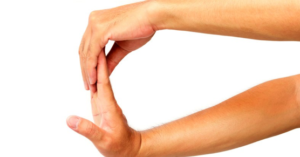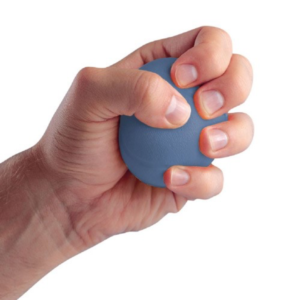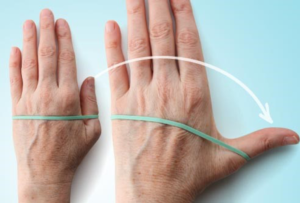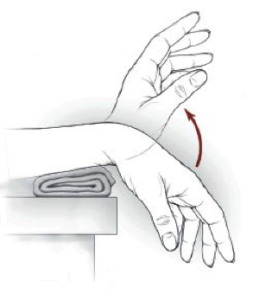Article by Jessica Darmago, AEP
What is OA and how does it affect you?
Osteoarthritis is the most common type of arthritis and most commonly effects the joints in the hand and wrist1. It is joint disease where there is progressive loss of cartilage, causing bone-on-bone rubbing2. This leads to swelling, stiffness, deformity and loss of function which ultimately effects the ability to carry out everyday tasks such as opening jars, typing on a computer and gripping a glass. This loss of function and pain contributes to a reduced quality of life3.
Exercise for Hand and Wrist OA
You may think that exercising with osteoarthritis will cause pain and further injury, however evidence shows that specific targeted exercises can assist in reducing pain and increase strength and function for those with osteoarthritis4. Physical inactivity and obesity is associated with an increased risk of developing chronic and degenerative diseases including osteoarthritis5.
- Range of Motion and Flexibility exercises
Wrist stretch: Pulling fingers towards the ceiling. Hold the stretch for 20 seconds and then pull the fingers towards the ground bending the opposite way at the wrist.
Dynamic wrist circles: circle the wrists in a clockwise direction 5 times, then anticlockwise. Ensure you move from the wrist rather than fingers.
Finger curls: spread fingers wide, then make a loose fist with the thumb outside of fingers.




- Strengthening Exercises
Grip Strength: Squeeze a soft ball in your palm for 3 seconds and then release. Repeat 10-15 times. This will assist in grabbing and holding onto objects.
Thumb extensions: wrap a rubber band around the hand at the base of the joint. Extend the thumb away and hold for a few seconds. Repeat 10-15 times
Wrist flexion and extension: Place your forearm on the table with the hand hanging off the edge. Move hand up until you feel a gentle stretch and return to starting position. Repeat the same motion with palm facing upwards. Repeat 10-15 times.


Gentle stretching and movements can assist in reducing pain and stiffness and maintaining range. Maintaining and improving muscle strength is important, as having strong muscles can help support and protect the joints affected by osteoarthritis. Ensure to start slowly with the exercises and stretches and you can gradually progress over time.
References
- Creamer, P., & Hochberg, M. C. (1998). The relationship between psychosocial variables and pain reporting in osteoarthritis of the knee.Arthritis & Rheumatism: Official Journal of the American College of Rheumatology, 11(1), 60-65.
- Klippel, J. H., Stone, J. H., & White, P. H. (Eds.). (2008).Primer on the rheumatic diseases. Springer Science & Business Media.
- Stamm, T. A.,Machold, K. P., Smolen, J. S., Fischer, S., Redlich, K., Graninger, W., … & Erlacher, L. (2002). Joint protection and home hand exercises improve hand function in patients with hand osteoarthritis: a randomized controlled trial. Arthritis Care & Research: Official Journal of the American College of Rheumatology, 47(1), 44-49.
- Hennig, T.,Haehre, L., Hornburg, V. T., Mowinckel, P., Norli, E. S., & Kjeken, I. (2013). hand Exercises Significantly Improved Activity Performance, Grip Strength and Pain In Women With Hand Osteoarthritis-Results From a Randomised Controlled Trial.: 2095. Arthritis & Rheumatism, 65, S892-S893.
- Carman, W. J., Sowers, M., Hawthorne, V. M., &Weissfeld, L. A. (1994). Obesity as a risk factor for osteoarthritis of the hand and wrist: a prospective study. American journal of epidemiology, 139(2), 119-129.
